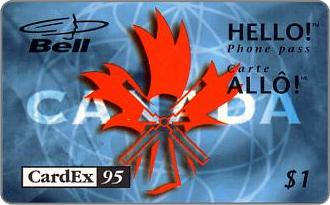The so-called “remote memory” card is predominant in the United States, where it was developed in order to find an universal system working with all the thousands of local telephone service providers and about 40 long distance carriers. But these cards, designed at first to be used only within the U.S., have today large diffusion all over the world and can be used with a tone-type phone to make calls to and from everywhere: for this reason, they are also called “international phonecards”.
With this system, the cards don’t have to be inserted into a telephone, so for long time collectors from outside the U.S. have been uncertain if they should have been considered real telephone cards, but, especially for their diffusion in other Countries, they finally have been accepted by most collectors.
The system is based on a central computer and each card purchased has a predetermined value which is stored on the computer, and not in the card itself, as is true with the other types of cards.
The card owner calls a toll-free number and, following instructions given by a voice prompt, dials his personal identification number (or PIN), usually printed on the back of each card and protected in some way, like under a coating of scratch-off material, or visible on the card, which in turn is protected within a sealed envelope. Dialing the PIN, the computer is alerted to identify the card so that it can determine how much value and phone time remains on it, and the voice prompt then instructs you to call the number of the party you are seeking.
Calls made in this way are usually cheaper than standard credit card or coin calls, because you don’t have to pay access fees, surcharges, billing charges, operator expenses, etc., so the system is going to have a great success all over the world for International calls.


























